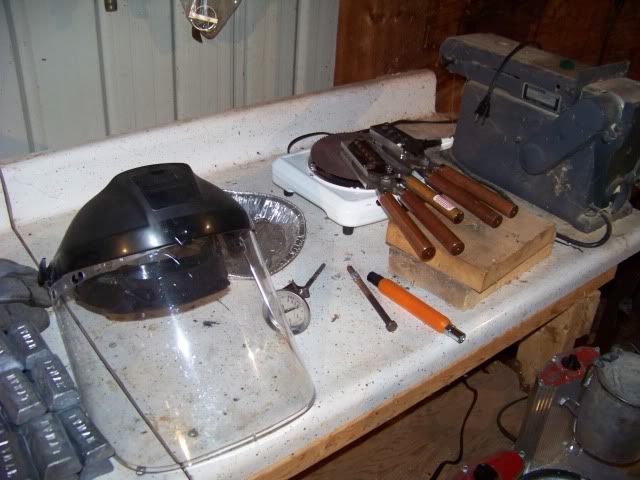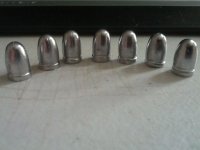Hello All.
As my title suggests, I need some help with the lee six cavity molds. I'm starting to feel like fate doesn't want me to use these time savers!
I have three six bangers: 158gn SWC(357), 125gn LRN(9mm), 230gn LRN(45).
All but one are suffering from the same problem: They REFUSE to close all the way. I know it has to be something that I'm doing wrong. I know this because all of them closed properly when I first got them. The first was the 45. This was my first six banger and thus understand where I screwed up. Since then I have watched many a video of people casting with the six bangers to see technique and even call Lee support to get information on common causes. Yet still my six bangers will no longer close after about the first 120 or so bullets. The only reason my 9mm doesn't have the problem is because I may have accidentally broken the sprue plate handle off when the mold was too cold.....
Anywho, the only saving grace at this point is that my sizing dies seem to remove 90% of problems on the bullets caused by this issue and the other 10% really dont bother me in the slightest.
So I need help. Anybody have this issue? Any tricks you learned? Are there other six banger molds on the market that might be better in general than lee?
Help?
Thanks all
As my title suggests, I need some help with the lee six cavity molds. I'm starting to feel like fate doesn't want me to use these time savers!
I have three six bangers: 158gn SWC(357), 125gn LRN(9mm), 230gn LRN(45).
All but one are suffering from the same problem: They REFUSE to close all the way. I know it has to be something that I'm doing wrong. I know this because all of them closed properly when I first got them. The first was the 45. This was my first six banger and thus understand where I screwed up. Since then I have watched many a video of people casting with the six bangers to see technique and even call Lee support to get information on common causes. Yet still my six bangers will no longer close after about the first 120 or so bullets. The only reason my 9mm doesn't have the problem is because I may have accidentally broken the sprue plate handle off when the mold was too cold.....
Anywho, the only saving grace at this point is that my sizing dies seem to remove 90% of problems on the bullets caused by this issue and the other 10% really dont bother me in the slightest.
So I need help. Anybody have this issue? Any tricks you learned? Are there other six banger molds on the market that might be better in general than lee?
Help?
Thanks all




